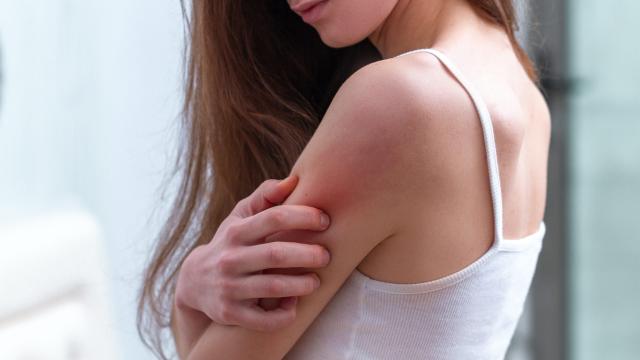Having a sore arm after you get a vaccine is pretty common, but some people who get their first dose of a COVID vaccine have ended up with a red or itchy rash on their arm or, occasionally, their whole body. Fortunately, the rash goes away and tends not to come back — at least not as severely — with the second dose.
It’s important to understand the distinction between a serious or immediate allergic reaction (which means you shouldn’t go back for a second shot) and the annoying but non-serious rashes that are sometimes called “COVID arm” or “Moderna arm.” The U.S. CDC considers a severe allergic reaction to be one that required the person to use epinephrine (for example, an Epi-Pen) or go to the hospital. An immediate allergic reaction is one that develops within 4 hours of the shot. According to the CDC:
An immediate allergic reaction happens within 4 hours of getting vaccinated and may include symptoms such as hives, swelling, and wheezing (respiratory distress). Your doctor may refer you to a specialist in allergies and immunology to provide more care or advice.
What does “COVID arm” look like?
The less serious rashes that are being called “COVID arm” develop more than four hours after getting the vaccine. Sometimes they don’t show up until several days later, or even a week later. The rash may be red, itchy, swollen, or painful.
A recent study looked at reports of skin conditions that followed either the Pfizer or Moderna vaccines, and the results are encouraging. Of the 414 people who got a rash after their shot and whose doctor reported the rash through a dermatology database, none went on to develop anaphylaxis (a life-threatening allergic reaction.)
The rashes were temporary, and only 43% of those who got a rash with their first dose got one with their second. That means odds are better than 50/50 that you won’t get one the second time around. Among people who did get a rash both times, the second-dose rash was usually not as severe.
One of the common types of skin reactions in the study was redness or itching around the site of the shot. Other less common reactions were a measles-like rash all over the body, and “COVID toes,” swelling or sores on the toes or occasionally fingers.
What to do if you get a rash
As always, contact your provider if you are concerned about something that is going on with your body, especially if you want to rule out the possibility that something other than the vaccine has caused the rash.
Otherwise, the CDC recommends taking an antihistamine to relieve the itch (if the rash is itchy), and/or a pain reliever or anti-inflammatory (if the rash is painful). Tylenol is a good option, and NSAIDs like ibuprofen are also appropriate.
Even if you developed a rash, Do go back for your second dose. Tell the person administering the vaccine about the reaction you had; they might want to give you the shot in the opposite arm.

Leave a Reply
You must be logged in to post a comment.